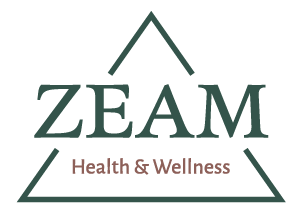Finding help for mental health is rarely straightforward. You call one clinic, and they say their waitlist is six weeks. Another might have openings but only for therapy, not psychiatry.
Meanwhile, symptoms keep piling up. In the U.S., the average wait for behavioral health care is close to 48 days. California continues to face deep challenges. Psychiatrist shortages are projected across every region of the state, with some counties already operating at half the workforce they need.
The system is also fragmented. Therapy here, prescriptions there, a separate office for something like IV support. You tell your story three times, fill out three sets of paperwork, and still worry whether providers are talking to each other. It wears people down.
That’s the problem integrated care tries to solve. At Zeam, we decided to flip the script. We run a mental health clinic where therapy, psychiatry, and IV-based support are all under one roof. The point is to keep everything connected so healing feels possible, not exhausting.
What Integrated Care Looks Like at Zeam
For us, integration begins with one intake. A patient sits down, tells their story once, and the whole team uses that as a shared starting point. Therapists, psychiatrists, and wellness providers can all view the same plan, which means no one is working blind.
We also lean on measurement-based care. Screening tools like PHQ-9 for depression and GAD-7 for anxiety help us see what’s really happening. A recent JAMA Psychiatry review showed that Collaborative Care models using shared plans and symptom tracking had stronger results than traditional setups.
In this case, integration isn’t about having “extras” like IVs or TMS for the sake of it. It’s about making sure those treatments talk to each other, so no one slips through the cracks.
Why Convenience and Speed Matter for Patients
Here’s something patients tell us all the time: Waiting is the hardest part. By the time someone reaches out, they’re often already at a breaking point. Adding weeks of delays or multiple referrals just piles on frustration.
Integrated care changes the timeline. If therapy, psychiatry, and IV services all live under the same roof, scheduling moves faster. You don’t get stuck on hold with three different offices, nor do you need to start from scratch each time.
According to research, systems that add integrated behavioral health cut wait times significantly. They also see fewer ER visits related to mental health crises, which makes sense. If you can see your provider quickly, you’re less likely to end up in an emergency.
Better Outcomes When Therapy and Psychiatry Partner
Therapy and psychiatry are often treated like separate lanes. But they intersect more than people realize. Therapy gives patients tools and space. Psychiatry supports with medication when biology makes things heavier. Put together, the impact multiplies.
The JAMA Psychiatry review highlighted this. Patients in Collaborative Care programs, where psychotherapy and medication management were tied together, saw bigger gains in depression scores than patients who had one without the other.
You can see why. Imagine a patient whose anxiety spikes even while practicing coping strategies. If their therapist and psychiatrist are connected, that update leads to a quick medication check instead of months of waiting. Meanwhile, therapy continues, now aligned with the medication shift.
Measurement-based care keeps that loop alive. One study showed patients using enhanced tracking tools saw sharper PHQ-9 reductions than those using standard methods. For us, that means therapy notes, psychiatric adjustments, and patient feedback all flow in one direction.
Advanced Therapeutic Options on Site
Integrated care also opens the door for advanced treatments that need tight oversight. At Zeam, this means TMS, ketamine, and Spravato®.
TMS, or Transcranial Magnetic Stimulation, is safe and effective for depression. Combining TMS with antidepressants can produce stronger outcomes than either alone. Because we house psychiatry and TMS together, patients don’t get stuck waiting between providers. Adjustments happen in real time.
Ketamine and Spravato® carry a similar story. Both can reduce depressive symptoms and suicidal ideation in people with treatment-resistant depression. The best outcomes happen when these treatments are paired with therapy and psychiatric monitoring.
At Zeam, that’s how we deliver them. Not as isolated fixes, but as part of a coordinated care plan.
Supportive IV Services to Enhance Core Care
IV therapy is popular, sometimes too popular. At Zeam, we offer wellness drips, but we keep them grounded. These IVs can support hydration, recovery, or energy in certain cases; for example, someone who is worn down after a long depressive episode.
The science is mixed. Some patients feel a real difference, while research calls for more studies. That’s why we frame IVs as supportive tools, never replacements. The core of mental health treatment is still therapy and psychiatry.
Safety, Coordination, and Holistic Well-Being
Integrated care doesn’t just speed things up. It makes them safer. When the same team manages therapy, psychiatry, and supportive services, the risk of medication mix-ups drops. Polypharmacy issues, where drugs negatively interact, are far less likely when one chart keeps everything visible.
Research also points to whole-person benefits. Integrated programs reduce depression or anxiety, as well as lower stress hormones and support cardiovascular health. Patients notice when their bodies respond alongside their minds.
Equity is another layer. Collaborative Care has been shown to reduce disparities for minority groups. Offering therapy plus psychiatry in Sacramento under one coordinated plan helps close gaps. That’s something we take seriously.
Take the Next Step Toward Better Care
This all comes together at our Folsom, Sacramento, and Roseville clinics. We provide therapy, advanced psychiatry, TMS, ketamine treatments, and supportive IV services in one place. That means no juggling multiple offices, no repeating the same story, and no wondering if your providers are communicating.
We know what happens when care is broken up: It slows people down, adds stress, and sometimes stops progress altogether. Integrated care does the opposite. It makes things easier. Our team works together to keep things moving, whether you need therapy, help with your medications, or more advanced treatments.
Now is the time to try something different. Reach out to us today, schedule your intake, and let’s build your plan for better mental health.
Key Takeaways
- Fragmented care slows healing — The average U.S. wait for behavioral health care is ~48 days, with California facing psychiatrist shortages and fragmented systems. Integrated care reduces wait times and ER visits. [1][2]
- One intake improves coordination — Integrated models allow patients to tell their story once, giving therapists, psychiatrists, and wellness providers access to the same plan, reducing errors and stress. [3]
- Therapy + psychiatry together are stronger — Collaborative Care models show greater improvement in depression scores compared to standalone therapy or medication. [4]
- Measurement-based care sharpens results — Using tools like PHQ-9 and GAD-7, integrated systems track progress better, leading to faster and more effective treatment adjustments. [5]
- Advanced therapies work best when coordinated — TMS, ketamine, and Spravato® are most effective when combined with psychiatric monitoring and therapy. [6][7]
- IV therapy is supportive, not core care — While wellness IVs may aid hydration and recovery, evidence is mixed; they should complement, not replace, therapy and psychiatry. [8]
- Integrated care improves safety — Coordinated medication management lowers risks of drug interactions and polypharmacy issues. [9]
- Equity benefits — Collaborative Care models reduce disparities in mental health outcomes, particularly for minority groups. [10]
References
[1] National Council for Mental Wellbeing. Average Wait Times for Behavioral Health Services.
[2] California Future Health Workforce Commission. Psychiatrist Shortages in California.
[3] Archer J, et al. Collaborative Care for Depression and Anxiety Problems. Cochrane Database. 2012.
[4] Unützer J, et al. Collaborative Care Management of Late-Life Depression in the Primary Care Setting. JAMA. 2002.
[5] Fortney JC, et al. Implementation of Measurement-Based Care in Behavioral Health. Psychiatric Services. 2017.
[6] George MS, et al. Daily Left Prefrontal Transcranial Magnetic Stimulation Therapy for Major Depressive Disorder. Arch Gen Psychiatry. 2010.
[7] Daly EJ, et al. Efficacy of Esketamine Nasal Spray Plus Oral Antidepressant in Treatment-Resistant Depression. JAMA Psychiatry. 2019.
[8] Cleveland Clinic. IV Therapy: Benefits, Risks, and Evidence.
[9] Simon GE, et al. Randomized Trial of Depression Follow-Up Care in Primary Care. Arch Fam Med. 2000.
[10] Alegría M, et al. Disparities in Depression Treatment Among Racial and Ethnic Minority Populations. Psychiatric Services. 2008.




